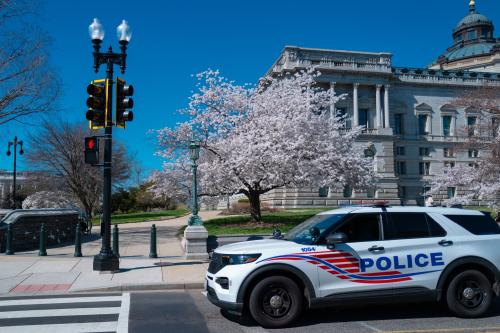In response to concerns over the rising price of college and increasing amounts of student loan debt, the Obama Administration has worked to expand income-based repayment programs for those with federal student loans. In late 2015 or early 2016, the U.S. Department of Education will likely allow students with any federal loans to enroll in a more-generous version of income-based repayment that would cap monthly payments at 10 percent of discretionary income (i.e., earnings above 150 percent of the federal poverty line) for 20 years for undergraduate students and 25 years for graduate students, with any remaining balances forgiven by the federal government.
Although this new version of income-based repayment has the potential to benefit up to six million Americans with student loan debt, concerns have been raised about this more generous program. First, the price tag is estimated at $15.3 billion over 10 years, or roughly 5 percent of forecasted Pell Grant expenditures during this period. Second, graduate students, who are more likely to have six-figure student loan debt and enroll in income-based repayment programs at higher rates, will see more benefits than undergraduate students with smaller amounts of debt but worse career options. Finally, as more students enroll in income-based repayment plans, colleges have fewer reasons to control costs due to students’ ability to access credit.
An interesting alternative to federal student loans that has emerged in recent years has the potential to shift the financial risk of paying for college away from the federal government and students, instead placing the risk in the private sector. Income share agreements (ISA) function somewhat similarly to income-based repayment plans, as students pledge to pay a predetermined percentage of their annual income in exchange for funds to pay for college. However, unlike federal income-based repayment plans, the percentage of income and the length of the repayment period are negotiated between a private investor and the student instead of being the same across all students. Students who major in economically desirable fields, such as engineering and business, at top colleges are likely to get better repayment terms than students majoring in less-profitable but socially important fields, such as education and nursing, at more typical colleges.
Given the current generosity of income-based repayment programs—and the likelihood that the federal government loses money on many students today—I have to wonder how many students would use ISAs once potential legal issues around their operation in the United States are resolved. Students in less-lucrative fields or those who plan to work in public service careers are unlikely to get better terms from the private sector than the federal government. These students would be likely to continue using federal student loans, although it is possible that ISAs could partially replace Parent PLUS loans as a financing source should parents not want to take out loans for their children when ISAs are available.
This leaves two groups of students who are likely to be interested in ISAs. The first group is those students who are either attending colleges that do not offer their students federal loans (primarily for-profit colleges and community colleges), or those attending short-term training programs such as coding ‘boot camps’ that do not currently qualify for federal student aid. Something in the neighborhood of two million students attend these colleges and programs, which results in a fairly sizable market. However, all of these programs tend to be relatively inexpensive, meaning that the per-student profit for an ISA provider will be fairly small.
The group of students who would be more lucrative for ISA providers would be those students enrolled in profitable degree programs at traditional undergraduate and graduate institutions. Because these programs tend to be expensive, the contract would need to be designed so the provider could make a profit on a large initial investment. However, students could lock in paying a lower percentage of their income than what they would expect to pay under income-based repayment if their expected earnings are high enough.
But students with high expected incomes may stay away from ISAs because they may expect to pay more in an ISA than under the standard federal repayment plan (a fixed monthly payment over 10 years). It would be difficult for ISA providers to undercut the federal government’s price in today’s environment of reasonably low interest rates, but it could be possible for students who have the highest likelihood of graduating and making a large salary because of the relatively low risk these students represent to a provider. Additionally, the presence of post-graduation private loan refinancing options such as Earnest and SoFi give successful graduates a way to lower their loan payments without giving up a share of their income.
Income share agreements have the potential to create another option for students looking to pay for college while seeking assurances they will not be overwhelmed by future payments. However, given the current generosity of federal income-based repayment programs and the likely hesitation of those who expect six-figure salaries to sign away a percentage of their income for years to come, the market for these programs may be somewhat limited. However, the federal government should encourage the development of private ISA providers in order to give students as many options as possible to finance their education while setting reasonable parameters for their operation that protect students from fraud and abuse.
The Brookings Institution is committed to quality, independence, and impact.
We are supported by a diverse array of funders. In line with our values and policies, each Brookings publication represents the sole views of its author(s).



Commentary
Who would use income share agreements to pay for college?
August 25, 2015